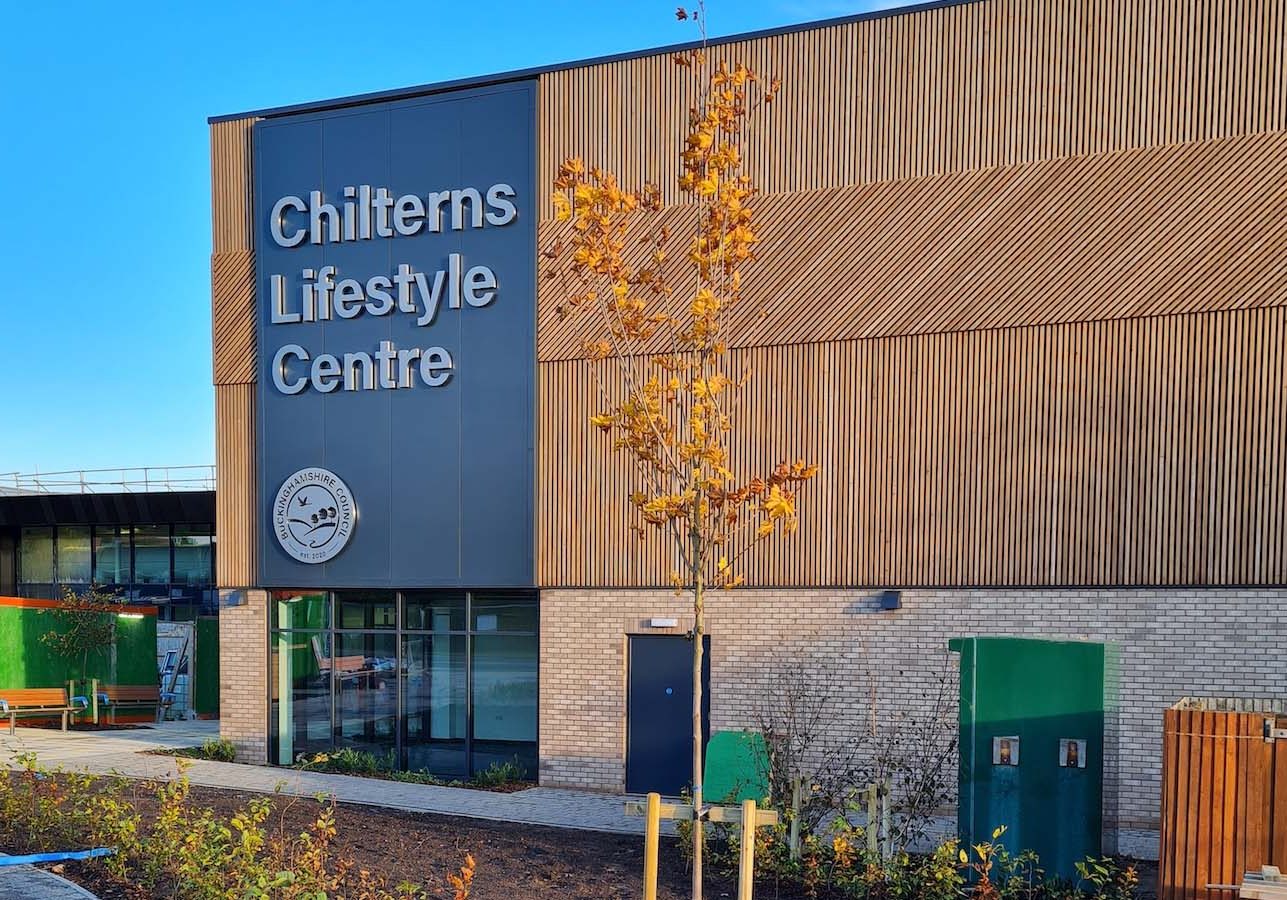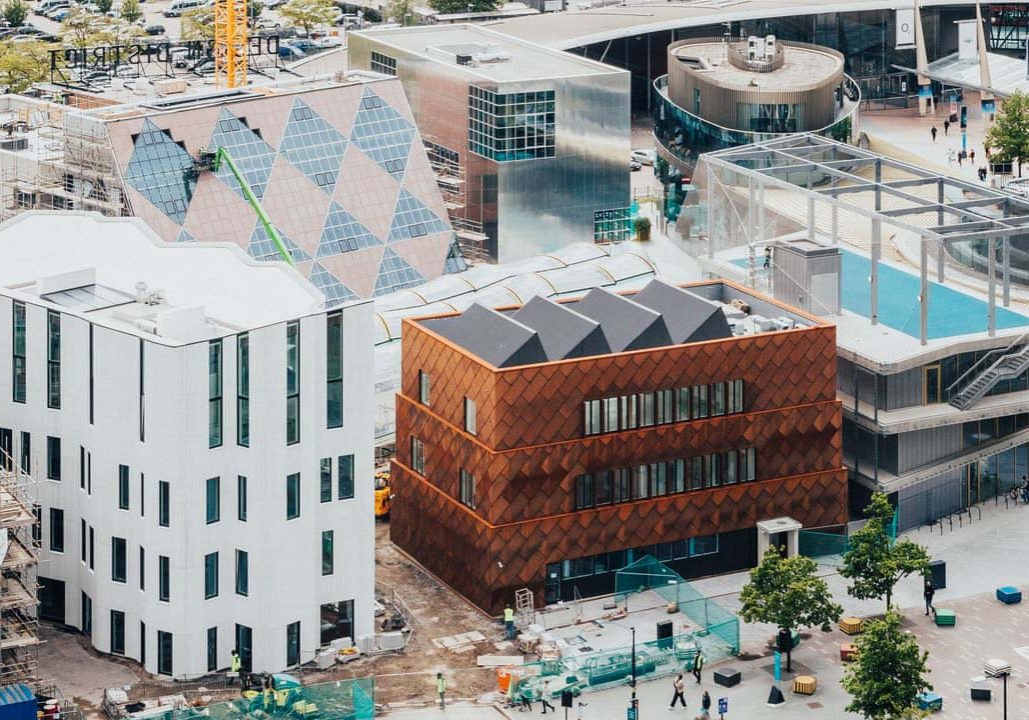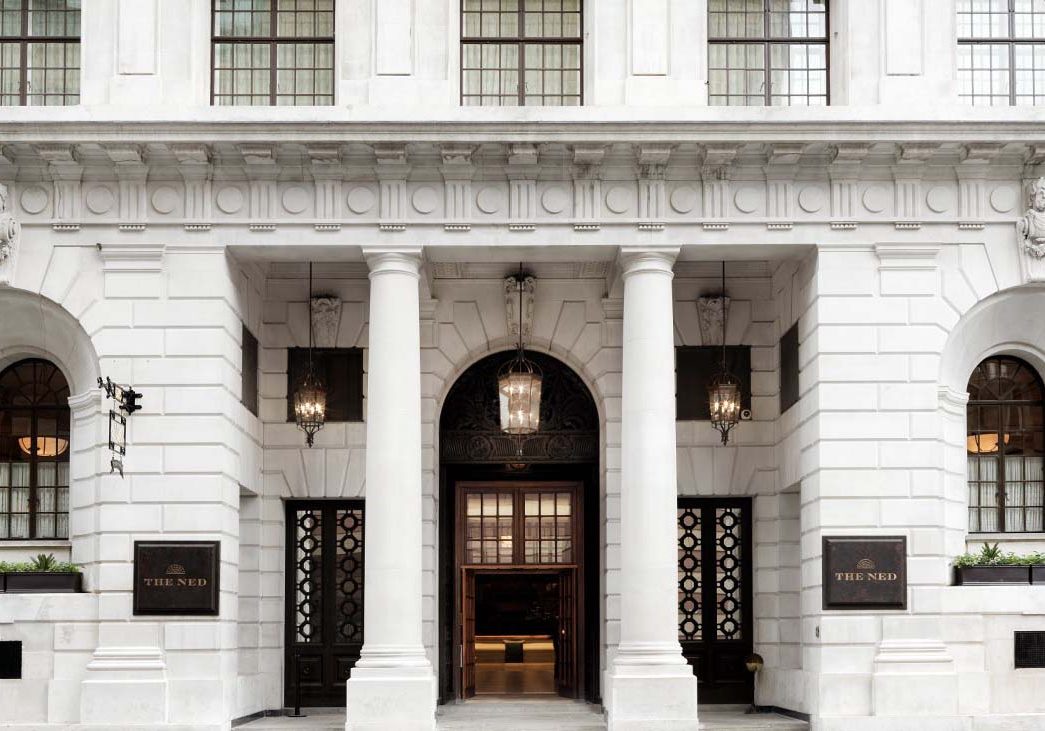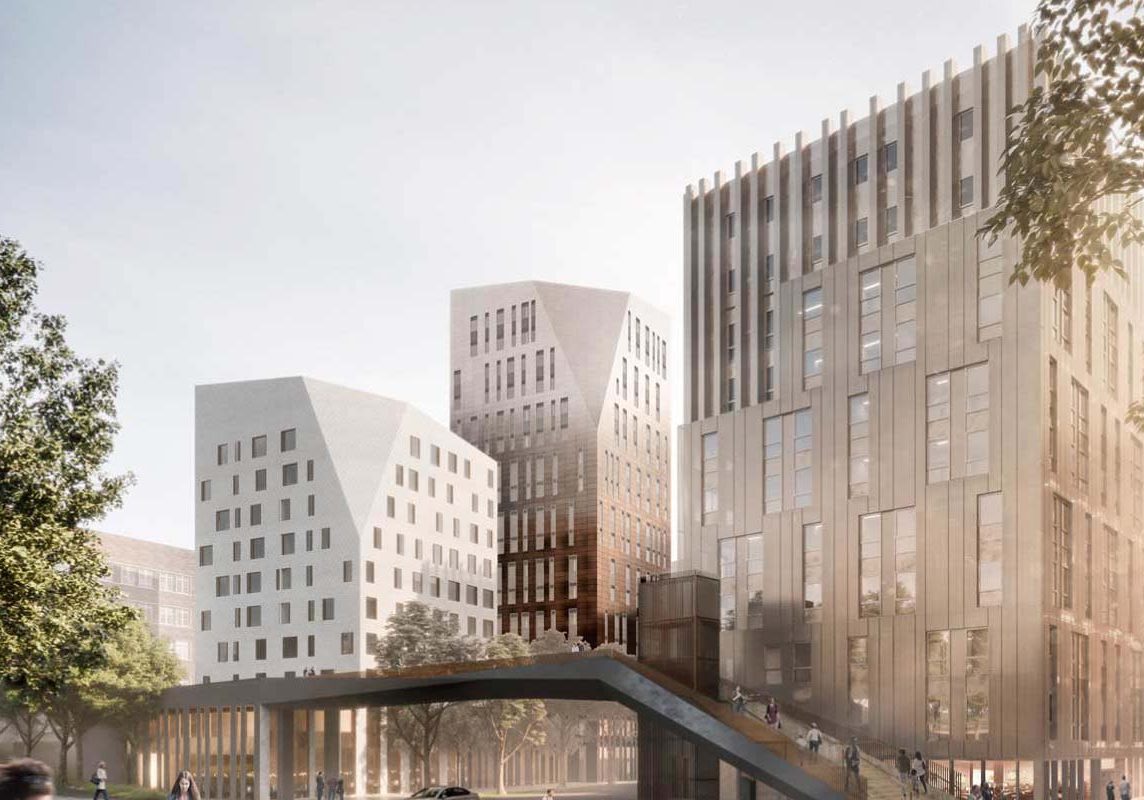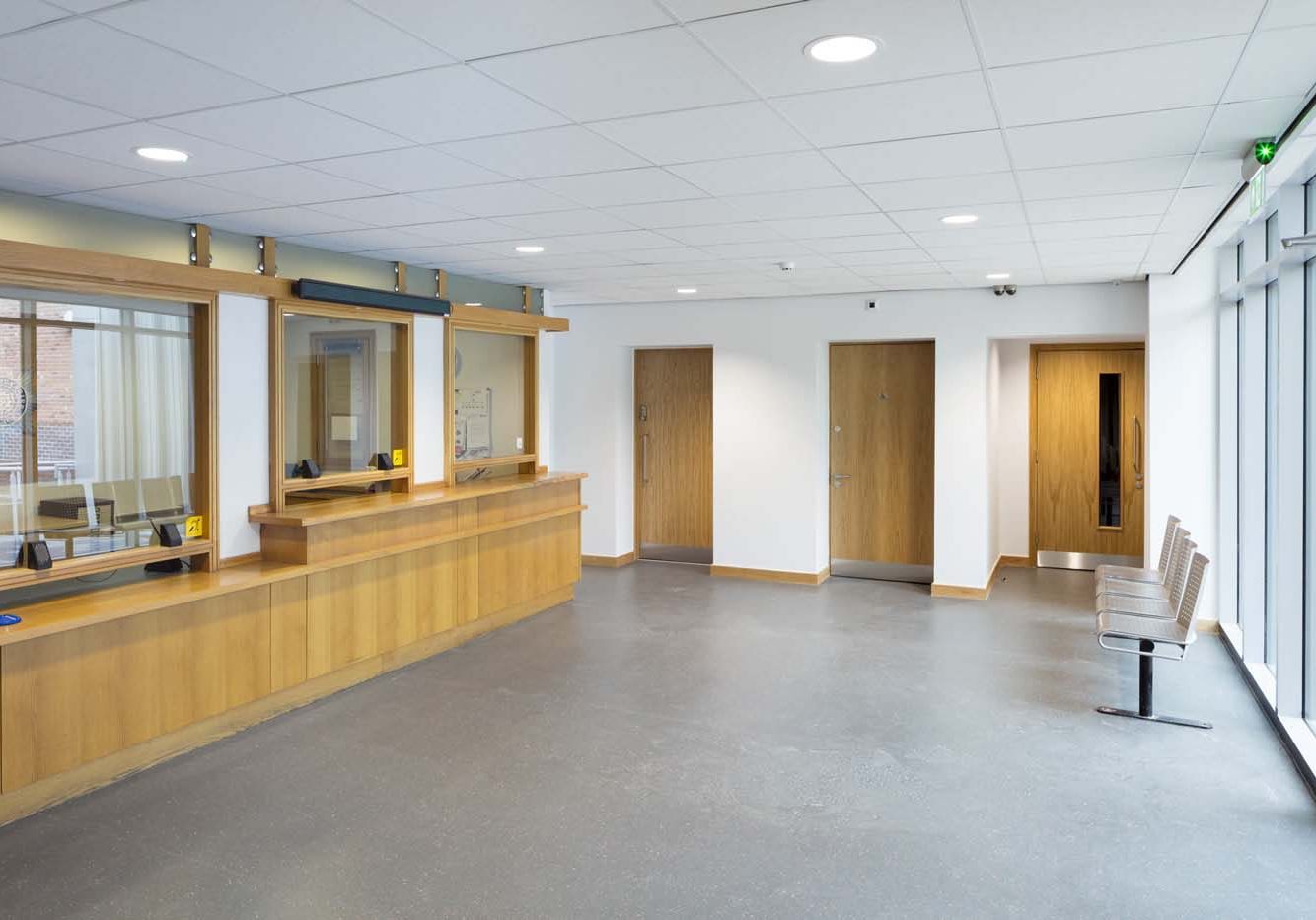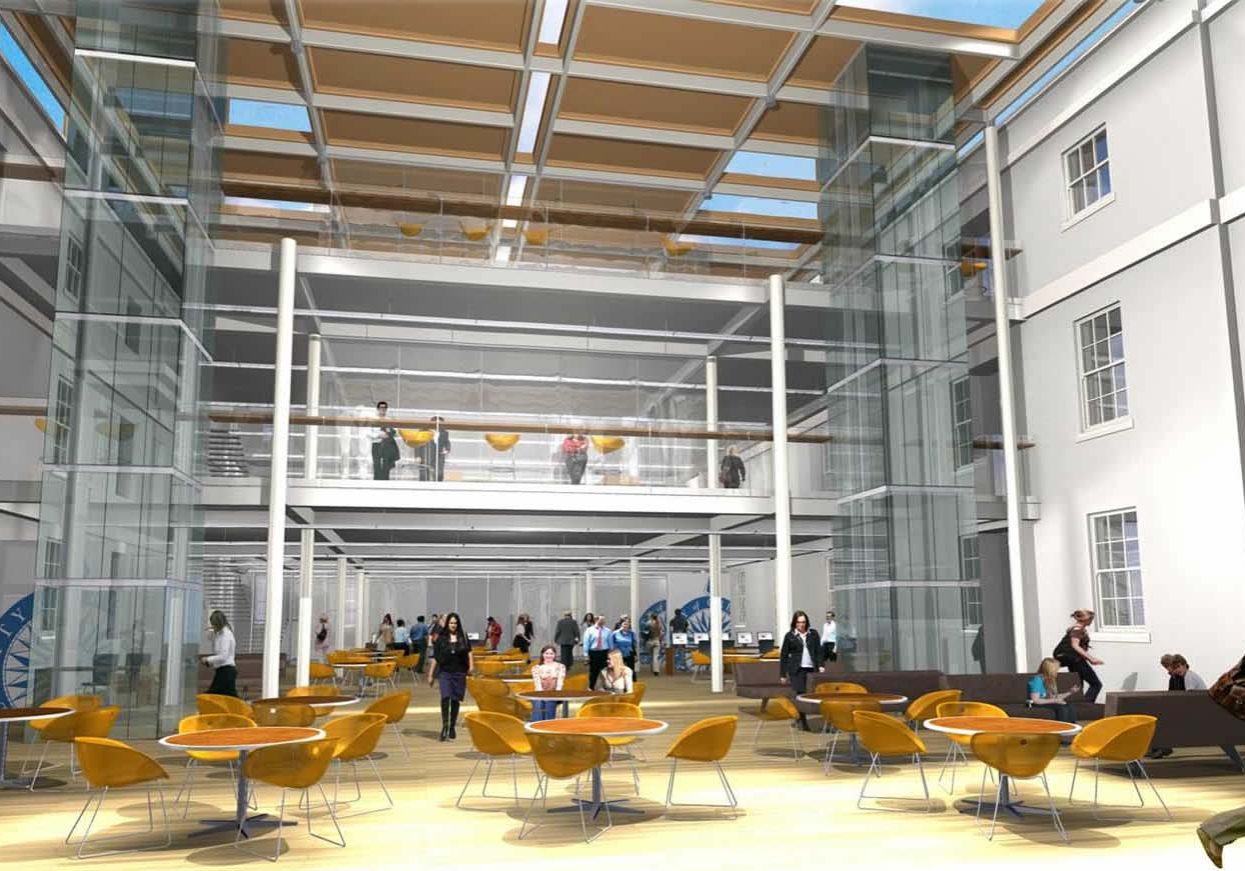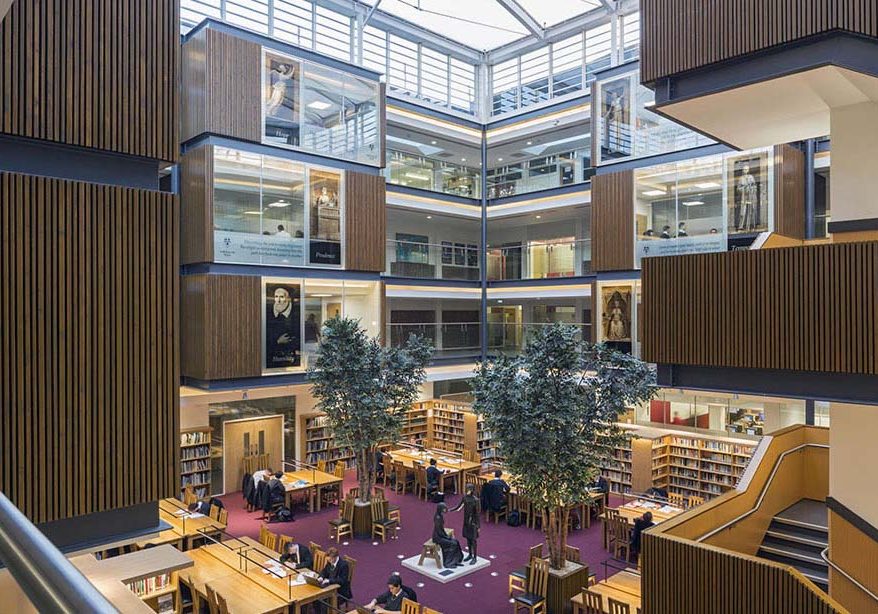University of Greenwich
Location: University of Greenwich, Dreadnought building
Value £25 m
Architect Dannatt Johnson Architects
Contractor Willmott Dixon
Refurbishment of the existing building to create a student hub and go-to place for students. It contains state of the art learning, teaching and social spaces.
This project is a great example of how an existing grade II listed building has been refurbished to create a state-of-the-art teaching and research facility for the 21st century. In addition to the teaching and research facilities, the building also houses a student gym, student union and social spaces, along with administration areas.
The Dreadnought building was constructed during 1764-68, originally by Greenwich hospital. The building was heavily damaged during the World War II, the operating theatres, the chapel and the roof were completely destroyed. During 1948 the building was taken over by the recently created NHS and refurbished. During the beginning of the 80’s the building closed, until the late 90’s where the University of Greenwich opened a main Library, during this time the open courtyard was covered, and a main reception was constructed.
The main challenges of this project were to implement all the acoustic requirements within the existing building and to deliver a state-of-the-art facility to serve the students and staff during the 21st century.
The Dreadnought Building is a three-storey listed II building. The proposal was to refurbish the entire building in order to construct a new gym, SU Social Space (Bar area), double high Student and social hub, and teaching, and learning rooms. The refurbishment of the building also included the following spaces: study rooms, dance studio, students group rooms, SU radio rooms, confidential interview rooms, offices and open plan offices.
The main challenge was to evaluate the sound insulation provided by the existing structures; it was clear that in order to deliver the necessary acoustic requirements an extensive sound insulation campaign was required. The results of the sound insulation showed that an extensive use of acoustic materials was required in order to deliver acceptable levels of sound mitigation between spaces. This represented the first challenge as the existing structures did not have sufficient space to incorporate the required acoustic materials. The solution was to use lightweight partitions with an appropriate cavity thickness in addition to high density mineral wool. The thickness of the partition was calculated in order to provide the required sound insulation requirements. Once installed a sound insulation test was completed in order to verify that the partition complied with the acoustic requirements. A similar solution was applied within areas with high activity noise such as the dance studio room where a floating floor and independent ceiling were used. Mainly the acoustic requirements were extracted from the acoustic guidelines BB93 and BS8233:2014.
Flanking sound transmission between rooms which required high levels of acoustic privacy was another additional challenge as the existing structures offered little in minimising this problem. The solution was to use a combination of high-dense acoustic board along with intumescent acoustic mastic.
The new area of the building also included an acoustic challenge as the location of the social spaces at basement level and learning areas at ground floor and first floor level levels required extensive use of acoustic measures. The installation of a new floor required that the flanking sound along the existing part of the building was minimised in order to avoid sound transfer. Different flanking sound calculations were completed, and the most cost-effective solution was delivered to the design team. Doors connecting the new and existing areas of the building were also carefully considered in order to avoid sound transfer between areas using appropriate acoustic seals and acoustic boards within the floor voids.
The control of the reverberation time in the central hub in addition to the control of the sound ingress through the existing windows into nearby offices were also a main challenge. It was advised that no acoustic treatment should be installed on the walls (previous courtyard external walls), therefore it was proposed to use a new acoustically absorptive roof, sound absorption panelling on the service risers and independent meeting pods strategically located in order to control the reverberation time. Extensive use of acoustic modelling software was completed in order to evaluate different acoustic scenarios and the most cost-effective solution was presented to the design team.
The final sound testing showed that the main objective of delivering a building with excellent acoustics was accomplished. Also, the complete works were delivered on time and all the character of the building and the sense of history was retained while a 21st century flexible building was delivered.

